INACTIVE
Dale Ramicone
Handle: Dr Solar
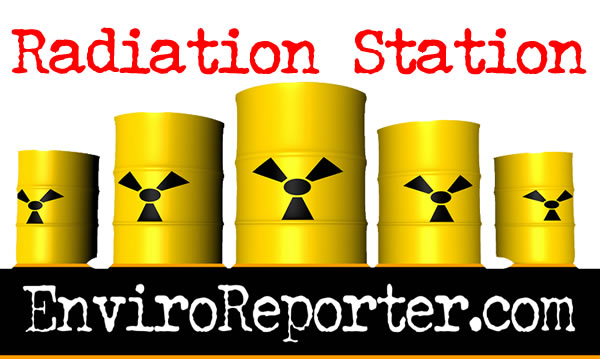
THANK YOU DR SOLAR FOR RADIATION STATION GLENDALE CALIFORNIA!!!
ONLINE LIVE STREAMING 24/7 365 DAYS A YEAR
April 8, 2011 – October 3, 2018
7 years, 5 months, 26 days
2,736 days
Inspector Alert detecting in Counts Per Minute (CPM) NA means Not Available
93 special tests as of October 18, 2018 – PAST TESTING
Fukushima, 5 years on by Dale Ramicone March 11, 2016
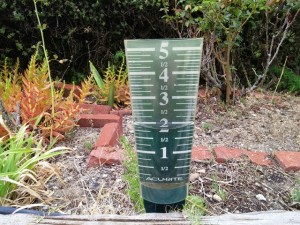 2016/04/07 at 7:35 pm
2016/04/07 at 7:35 pm
Light Glendale Rain 11 AM:
10 min average background 41.9 CPM
10. min average rain sample 46.2 CPM
2016/03/11 at 2:57 pm
2nd test 3:14 pm – 3:00 pm
10 min average rain sample: 45.2 CPM
pretty close to BG, 40.6 CPM
1st Rain test 2:00 pm – 2:15 pm
10 min average background: 40.6 CPM
10 min average rain sample: 42.8 CPM
2016/03/05 at 11:17 pm
Rain sample taken in Glendale CA on 3/5/2016 at 10:30 pm, during light rain.
Background :
10 minute average: 39.2 cpm
Rain sample:
10 minute average: 49.1 cpm
[Rain is 25.3% above background]
2016/01/06 at 11:41 am
~11:15 am PST INT RSGC RAIN SAMPLE: 51.9 CPM which is 30.4% over background
~11:00 am PST INT RSGC BG: 39.8 CPM
2015/12/13 at 7:28 pm
Glendale Rain 44.2 CPM
Background 42.5 CPM
Sample taken Dec 13th 2015 at 6:50 PM
Looks like we have cool rain at Radiation Station Glendale, California
2015/09/15 at 11:51 am
Rain in Glendale Sept. 15th 2015.
Sample 36.1 CPM, Background 44.1 CPM
The sample was gathered from raindrops collected on leaves at 11:30 AM. The background reading was from the dry container and paper towel used to gather the rain drops. Looks like the rain added nothing to the count, so this rain from tropical moisture is uncontaminated.
2015/07/19 at 6:08 pm
NA am INT Radiation Station Glendale California: 41.4 CPM
NA am INT RSGC RAIN SAMPLE: 43.6 CPM or NORMAL BACKGROUND
2015/07/18 at 10:37 am
10:35 am INT Radiation Station Glendale California: 44.2 CPM
9:55 am INT RSGC RAIN SAMPLE: 44.1 CPM or NORMAL BACKGROUND
2015/03/02 at 4:07 pm
Glendale rain activity measures near normal March 2nd, 2015
44.2 CPM sample from brief but intense shower
40.2 CPM background
Even though the rain shower was briefly intense and produced 1/8″ of rain in about 30 minutes, there was no thunderstorm activity. The radiation measurement was only about 10% above background, well withing normal variation of background levels. This is good news!
2015/02/23 at 7:49 pm
New rain measurements for the Los Angeles area:
I measured moderate activity in today’s briefly heavy rain storm that passed through Glendale, CA. I say moderate because I consider anything at 3X background or higher to be high activity. But this sample came it at slightly more the 2X (115%) background. Both the sample reading and the background reading are taken as 10 minute averages.
Sample: 97.3 CPM
Background: 45.2 CPM
Today’s storm (and it was accompanied by lightning) dumped a quarter of an inch of rain in about an hour. The rain rate was pretty impressive, and any rain for California is a good thing (moderately hot or not).
[Editor: Actually Dr Solar’s rain reading was 57.4 CPM which was 44.6% over background]
I’m just happy that we are not seeing anything sizzling. These trace readings are good news.
52.4 vs. 39.7 CPM. That is almost 32% over BG. Not very hot.
Getting a pretty good rain shower, taking a sample right now. According to the weather forecasters, this is an inside slider coming from the north, having spent some time inland. I’m thinking it will not be hot since it is not particularly vigorous atmospheric activity, but we will see.
2015/02/09 at 10:17 pm
On 2/1/2015 I detected hot rain in Glendale, CA, along with a similar detection by Michael Collins in Santa Monica, CA. Our two locations are separated by about 15 miles. My reading of 121 CPM rain was surprising since I had not seen anthing this active in our area for some time. I wondered if this was just a fluke, or was something different happening now. I commented how surprising the storm was since it moved in quickly, and was even accompanied by lightning. However, 3.3 times background was even more surprising once Michael and I had checked our samples.
Unfortunately, we don’t see a lot of rain in the Los Angeles area during the ongoing California drought. However, I was traveling to the San Francisco area this past weekend and had an opportunity to check the rain in Union City, CA. Union City is located in the San Francisco Bay area about 350 miles NW of Los Angeles.
There were two storms in the Bay area last weekend. I was a little late arriving to the Bay area on Saturday and I did not sample the first storm. Sunday morning at 9:00 AM, I sampled the second storm which was moving very rapidly and was accompanied by 45 mph winds. It was heavy rainfall at 7:00 AM, and at 9:00 AM it was easing quite a bit so I took two samples which were slightly active, measuring 43.3 CPM, and 42.9 CPM compared to background radiation at 29.3 CPM. Later in the day there was clearing followed by a light shower. I took another sample at 3:00 PM and found that it was right at background, 28.0 CPM.
I’m thinking that the more vigorous the storm, the more vertical mixing there is in the atmosphere. Strong updrafts and downdrafts may be bringing radidoactive particles down from higher aloft where the can be washed out to the ground by the rain. It’s a just a theory, but what we really need to know is, where is it coming from and what, exactly, are the radioactive particles involved. I doubt they are radon daughters, since these storms sweep in from the Pacific. Santa Monica in particular is literally right on the coast, Union City, too, is right off San Francisco Bay, and the wind and rain had been moving in rapidly for hours before I took my samples.
2015/02/08
Our very own Dr Solar has traveled to Union City, California which is on the southeastern shore of San Francisco Bay. Of course the good doctor travels with his Inspector nuclear radiation monitor and provided EnviroReporter.com with this initial report.
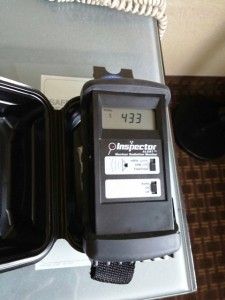
It rained over night and was still raining pretty hard at 7:00 AM. I collected two samples in light rain about 9: 00 AM.
#1, Windshield: 42.9 CPM
#2, Rear window: 43.3 CPM
#3, Background: 29.3 CPM
All are 10 minute timings. Hmmm.
“Hmmm” indeed. 42.9/29.3 = 46.4% above background and 43.3/29.3 = 47.8% above BG, both of which are readings of significance.
2015/01/30 at 5:37 pm
All are 10 minute timings [from rain in Glendale].
121.2 CPM from windshield [3.2 times background which is considered by the California Highway Patrol to HazMat trigger level. This is discussed in High radiation detected in L.A. rain* as is Radiation Station Glendale California.]
Then took a sample from the Bird’s of Paradise leaves in the front yard.
51.8 CPM rain from leaves
Then a 10 minute timing with no sample in the Pyrex bowl.
37.9 CPM Background
*Dale Ramicone’s contributions to this latest article, and to EnviroReporter.com, are invaluable to us. They have helped tens of thousands of people know how hot, or not, it has been in Glendale, the heart of Southern Like most news pieces, this latest one didn’t use all of Dale’s comments. We remedy that here because Dale is so insightful and knows the science. His comments to us in full:
Just when I thought it was safe to step out into the rain again. That little surprise shower even had a bit of lightening in it! When you asked for a sample, I didn’t really expect to find anything all that significant. My wife arrived minutes later, and I took a sample from the rain still remaining on edge of the windshield. The Inspector ten minute sample counted 121.2 CPM, way above background which was 37.9 CPM. This is troubling nearly four years after Fukushima nuclear meltdowns. Clearly, there’s radiation still coming from somewhere, and it’s washing out of the atmosphere. Notably, not every rain shower contains it. Finding out exactly what kind of radiation it is, and determining its source is the most important thing now. Radioactive isotopes don’t just vanish because we’re not thinking about them. They are in the ocean, riding the currents, picked up in the winds off of the ocean breakers. Some is still circulating high in the atmosphere, colliding with high energy radiation coming in from space. This spallation process fractures the radioactive isotopes into nuclear bits, changing them into a smorgasbord of radioactive fallout. Over time, these wash out in the rain and contaminate the water, and soil, and works it’s way into the food we eat. Does it dilute itself into non-existence? Hardly, some of these isotopes have very long half-lives, on the order of hundreds or even thousands of years. That’s why we need to know just what kind of fallout isotopes they are. And, how much of it is headed our way.
2014/04/02 at 4:24 pm
Radiation Station East, Glendale, CA: 3:30 PM rain sample 54.5 CPM vs 41.5 CPM background, 10 minute averages. That is 31% over background.
Rain was falling heavily, during a thunderstorm, lightning occurring less than 1/2 mile away.
This 31% figure over background level indicates some excess radiation was present.
2014/02/28 at 9:27 pm
Third Glendale CA rain sample for Feb 28, 2014 9:25 PM: 40.6 CPM 10 minute average, 38.5 CPM background. This sample is not showing any significant excess radiation.
2014/02/28 at 11:37 am
Glendale rain sample Feb 28, 2014, 11:30 AM, 44.8 CPM, background is 43.1 CPM. Rain sample was collected in a clean dish with paper towel absorber pad. The background and sample readings were both 10 minute averages. There seems to be little, if any, excess radiation in this storm.
2014/02/27 at 12:29 pm
Two rain samples each returned 10 minute averages of 40.7 CPM. The Background radiation measured 37.8 CPM over a 10 minute average.
Sample 1 was collected from rainwater clinging to leaves, and sample 2 from a dish exposed to the open sky containing an inch of rainwater. In the later case, 1/2 oz of water was sucked up using a clean kitchen baster and filtered through a coffee filter.
2013/12/19 at 2:43 pm
Rain sample #1 Glendale,CA: 53.0 CPM, background at 40.6 CPM
Rain sample #2 Glendale,CA: 80.8 CPM, background at 40.6 CPM
Both samples were collected directly on a paper towel standing in a container 2 feet above the ground. The first sample is 31% over background, the second, taken 1 hour later is 99% over background. I’ve used a paper shield and aluminum foil shield on the second sample. The reading is 73.0 and 63.6 CPM respectively. Ten minute averages were taken to determine all CPM statistics.
2012/10/11 at 2:44 pm
Glendale CA, Radiation Station: Rain, Thunderstorm
10 minute background: 36.6 CPM
10 minute rain sample: 44.8 CPM
22% over background. Not bad.
2012/04/26 at 2:56 pm
Glendale, CA rain sample 4/26/2011 2:50 PM, 41.2 CPM vs. 35.8 CPM background. That’s about 15% over background, which is nearly normal.
2012/04/26 at 11:13 am
Rain Sample 11:00 AM 4/26/2012, Glendale CA. 41.2 CPM, background is 34.6. That’s near normal, 19% over background.
2012/04/23 at 7:11 pm
1st HEPA filter reading 1011. That’s 101.1 CPM on a HEPA filter running continuously for the past 6 months.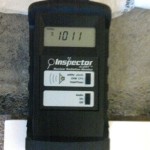
2nd HEPA filter reading 767, with Ziplock bag used as alpha filter. Most likely some good alpha component present.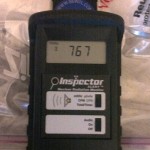
3rd HEPA reading 860 about 30 minutes after first reading. Indicates some fast decay radon progeny present.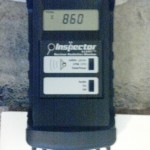
Glendale mist reading collected from wiped windshield, 1356 for 10 min timing. That’s 135.6 CPM while background measures 35. That’s 3.86X background.
2012/04/13 at 1:28 pm
Third Glendale rain sample, this time from a thunderstorm with lightning less than 1/2 mile away. 10 minute timing with the Inspector Alert produced a result of 45.8 CPM. Still very good, not much over background even for rain likely originating higher up in the atmosphere.
2012/04/13 at 11:26 am
Here are the numbers on Glendale, CA rain collected at 11:05 AM on 4/13/2012 . This second rain sample was collected the same way as the first one, directly from falling rain onto a paper towel which was resting on a clean plastic Ziploc storage bag.
background 10 min count 423 (42.3 CPM)
Rain sample 10 min count 460 (46.0 CPM)
8% over background. Cool rain in Glendale!
2012/04/13 at 10:55 am
Here are the numbers on Glendale, CA rain collected at 10:20 AM on 4/13/2012 . The rain was collected directly from falling rain onto a paper towel which was resting on a clean plastic Ziploc storage bag.
background 10 min count 423 (42.3 CPM)
Rain sample 10 min count 531 (53.1 CPM)
25% over background. Not especially hot.
2012/04/11 at 12:05 pm
Freshly collected Glendale CA rain sample. I took a ten minute timing with the Inspector Alert of a soaked paper towel exposed directly to the rain. The reading was 440, (44.0 CPM). This is barely over background level which was 41.2 CPM.
2012/04/11 at 11:02 am
Tested Glendale CA rain left over from the recent storm.
Background 10 min timing was 412 (41.2 CPM)
Wiped wet surface of rooftop solar panels 10 min timing was 604 (60.4 CPM)
Wicked up small puddle from trash can lid was 383 (38.3) CPM
It seems the difference is grime that was on the surface of the panels. Retesting the solar panel sample inside a plastic bag produced a 10 min count of 543 (54.3 CPM).
A second retest of the solar panel sample produced a 10 minute count of 501 (50.1 CPM)
It’s more than just alpha, but is decaying fairly quickly.
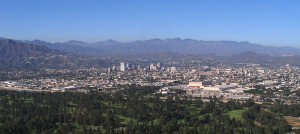 2012/03/25 at 2:34 pm
2012/03/25 at 2:34 pm
Glendale, CA 3/25/2012 2:30 PM
Rain Sample 10 min avg CPM: 41.2
Background 10 min avg CPM: 40.6
Clean Rain in Glendale, CA!
2012/03/17 at 10:47 am
Glendale Radiation Station East 3/17/2012 10:30 AM
Rain Sample 10 min avg CPM: 43.4
Background 10 min avg CPM: 42.3
Clean Rain! Enjoy Saint Patrick’s Day!
2012/02/27 at 11:32 am
Glendale, CA rain sample, 2/27/2012 11:00 AM 10 min avg CPM is 45.8, prior 10 min background count is 35.2. That’s 30% over background. This sample was taken by placing a paper towel directly in a light rain shower. The towel was damp, but not totally soaked.
2012/02/13 at 11:35 am
I have just completed a test of Glendale rain 11:00 AM Feb 13, 2012. I cleaned and dried my windshield inside my garage, rolled the car back into the light rain falling outside, and then collected a sample of rain on a paper towel from the wet windshield. A 10 minute background count of the dry paper towel was 425 CPM. The 10 minute average of the rain soaked paper towel sample taken from my windshield was 801 CPM, about 88% over background. Not as hot as the sample taken in Santa Monica, which is only about 15 miles from this location. So, your radiation mileage may vary! You can see the record video of this test at http://www.ustream.tv/recorded/20428685
2011/11/20 at 4:21 pm
Glendale CA rain at 2:50 PM PST is 147% of background.
86.2 vs. 34.8 CPM using 10 min averages.
2011/11/20 at 12:47 pm
Glendale, CA rain measures 34.7% over background at 11:30 AM PST 11/20/2011
51.2 CPM vs 38.0 CPM background.
2011/11/07 at 12:18 am
I am searching for radiation, but I’m focusing my attention on foods which may come from Japan, near Japan, or be contaminated by the North American jet s
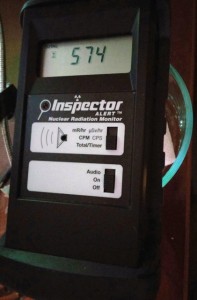












Recent Comments